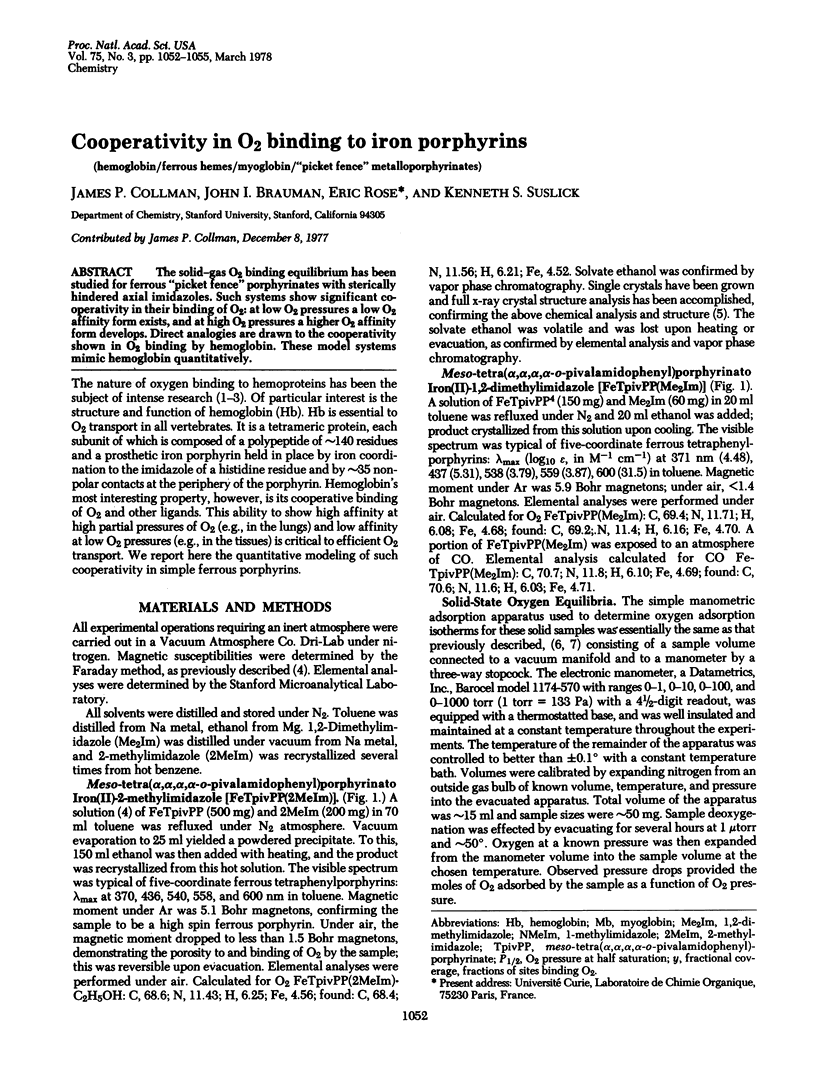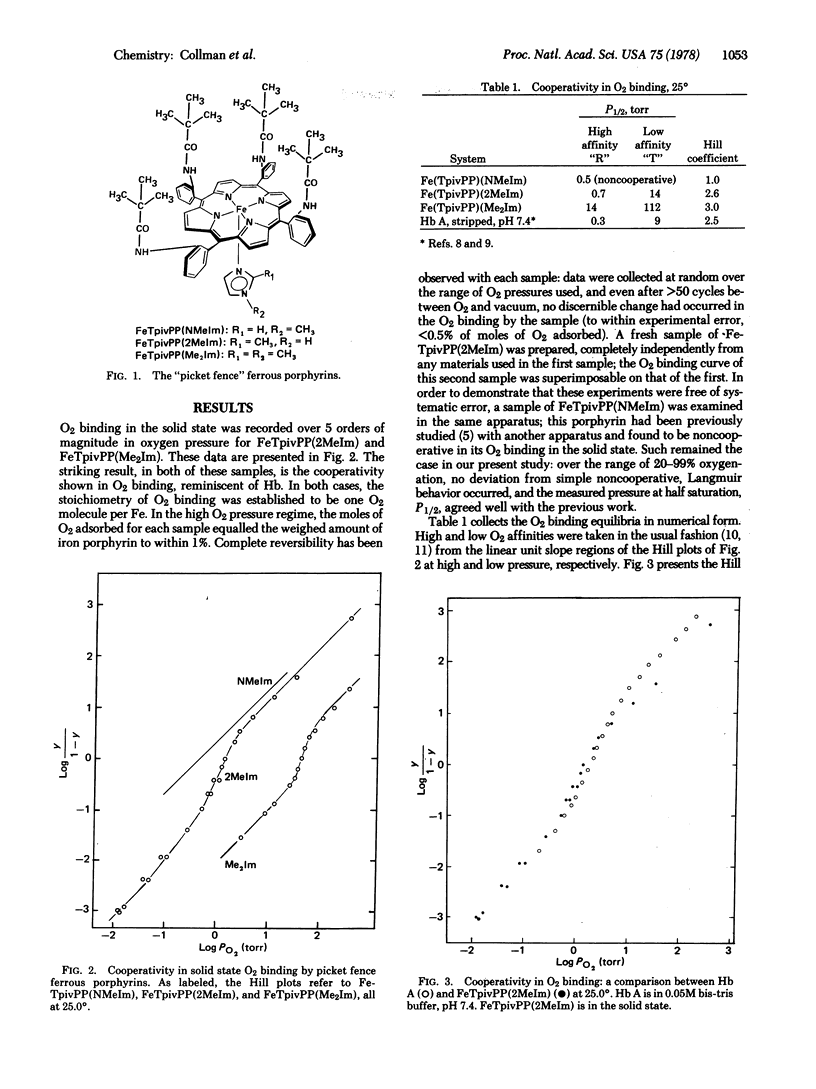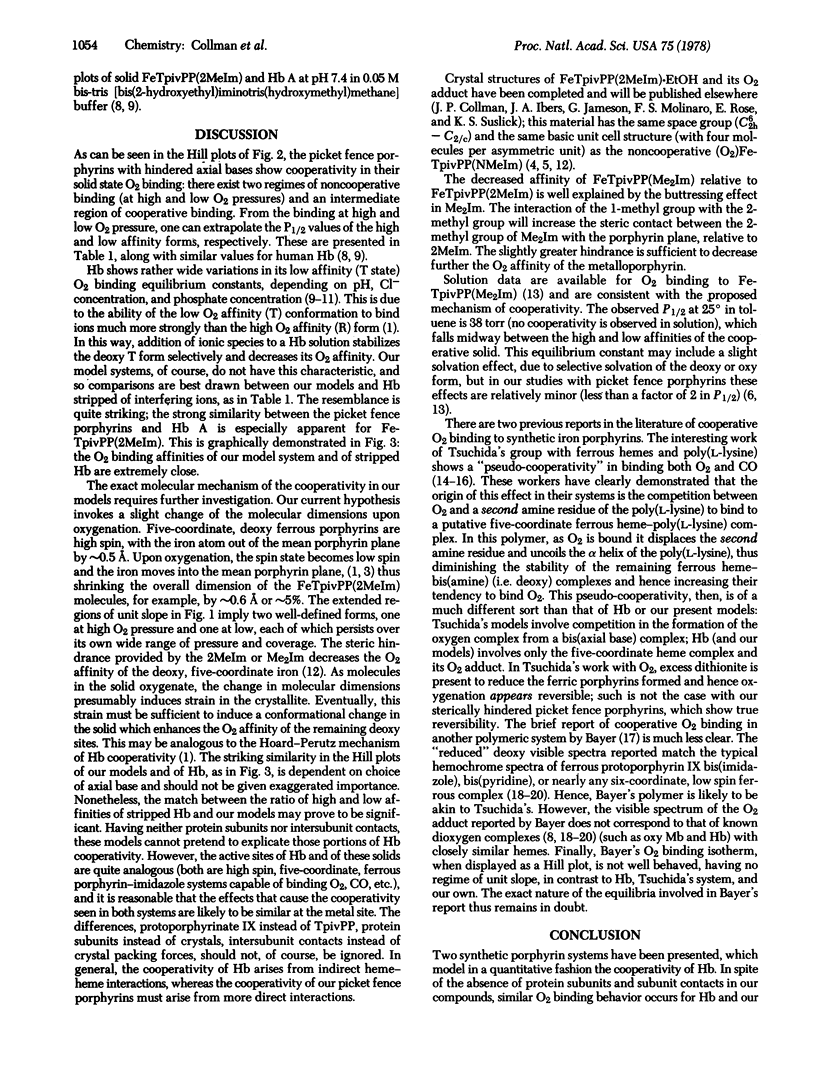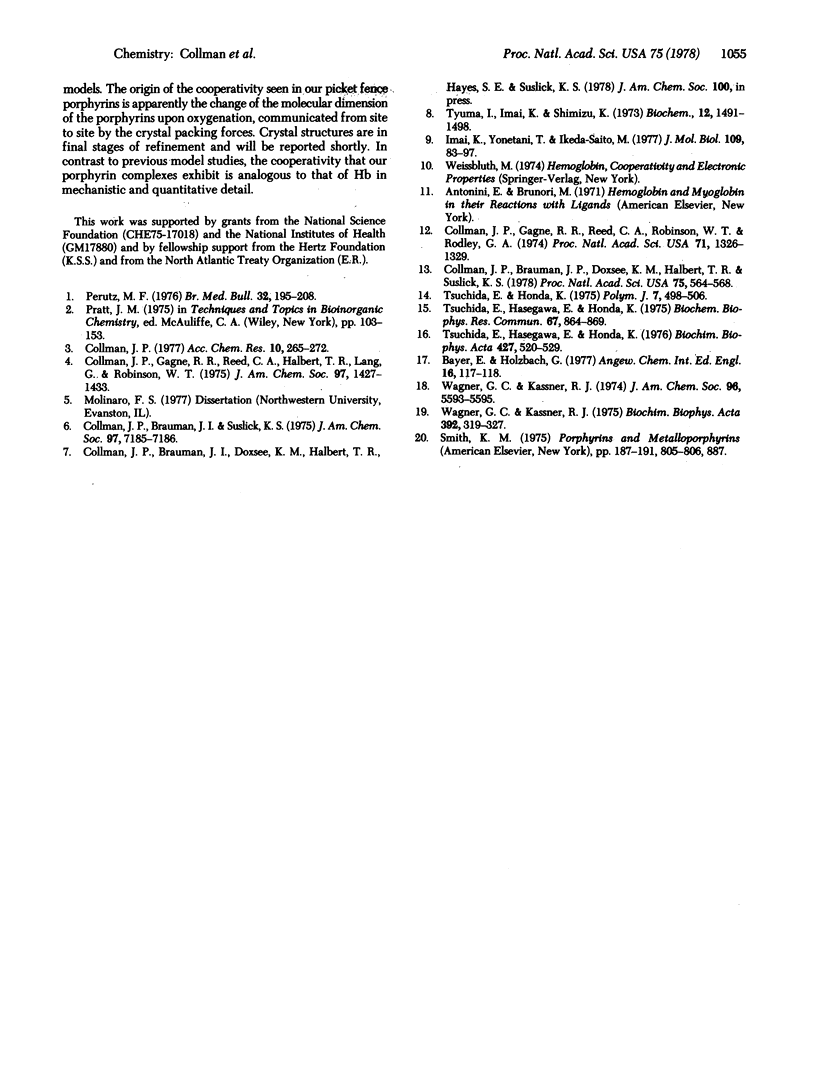Abstract
The solid-gas O2 binding equilibrium has been studied for for ferrous "picket fence" porphyrinates with sterically hindered axial imidazoles. Such systems show significant cooperativity in their binding of O2: at low O2 pressures a low O2 affinity form exists, and at high O2 pressures a higher O2 affinity form develops. Direct analogies are drawn to the cooperativity shown in O2 binding by hemoglobin. These model systems mimic hemoglobin quantitatively.
Full text
PDF



Selected References
These references are in PubMed. This may not be the complete list of references from this article.
- Bayer E., Holzbach G. Synthetic hemopolymers for reversible binding of molecular oxygen. Angew Chem Int Ed Engl. 1977 Feb;16(2):117–118. doi: 10.1002/anie.197701171. [DOI] [PubMed] [Google Scholar]
- Collman J. P., Brauman J. I., Suslick K. S. Letter: Oxygen binding to iron porphyrins. J Am Chem Soc. 1975 Nov 26;97(24):7185–7186. doi: 10.1021/ja00857a050. [DOI] [PubMed] [Google Scholar]
- Collman J. P., Gagne R. R., Reed C. A., Halbert T. R., Lang G., Robinson W. T. "Picket fence porphyrins." Synthetic models for oxygen binding hemoproteins. J Am Chem Soc. 1975 Mar 19;97(6):1427–1439. doi: 10.1021/ja00839a026. [DOI] [PubMed] [Google Scholar]
- Collman J. P., Gagne R. R., Reed C. A., Robinson W. T., Rodley G. A. Structure of an iron(II) dioxygen complex; a model for oxygen carrying hemeproteins. Proc Natl Acad Sci U S A. 1974 Apr;71(4):1326–1329. doi: 10.1073/pnas.71.4.1326. [DOI] [PMC free article] [PubMed] [Google Scholar]
- Imai K. Allosteric effects in cobaltohaemoglobin as studied by precise oxygen equilibrium measurements. J Mol Biol. 1977 Jan 5;109(1):83–97. doi: 10.1016/s0022-2836(77)80047-8. [DOI] [PubMed] [Google Scholar]
- Perutz M. F. Structure and mechanism of haemoglobin. Br Med Bull. 1976 Sep;32(3):195–208. doi: 10.1093/oxfordjournals.bmb.a071363. [DOI] [PubMed] [Google Scholar]
- Tsuchida E., Hasegawa E., Honda K. Cooperative reactions of poly-L-lysine-heme complex with molecular oxygen, carbon monoxide, or cyanide ion. Biochim Biophys Acta. 1976 Apr 14;427(2):520–529. doi: 10.1016/0005-2795(76)90194-x. [DOI] [PubMed] [Google Scholar]
- Tsuchida E., Hasegawa E., Honda K. Reaction of polymer-heme complexes with carbon monoxide or molecular oxygen. Biochem Biophys Res Commun. 1975 Dec 1;67(3):864–869. doi: 10.1016/0006-291x(75)90756-1. [DOI] [PubMed] [Google Scholar]
- Tyuma I., Imai K., Shimizu K. Analysis of oxygen equilibrium of hemoglobin and control mechanism of organic phosphates. Biochemistry. 1973 Apr 10;12(8):1491–1498. doi: 10.1021/bi00732a004. [DOI] [PubMed] [Google Scholar]
- Wagner G. C., Kassner R. J. Spectroscopic properties of ferrous heme complexes of sterically hindered ligands. Biochim Biophys Acta. 1975 Jun 12;392(2):319–327. doi: 10.1016/0304-4165(75)90013-6. [DOI] [PubMed] [Google Scholar]
- Wagner G. C., Kassner R. J. Spectroscopic properties of protoheme complexes undergoing reversible oxygenation. J Am Chem Soc. 1974 Aug 21;96(17):5593–5595. doi: 10.1021/ja00824a059. [DOI] [PubMed] [Google Scholar]


